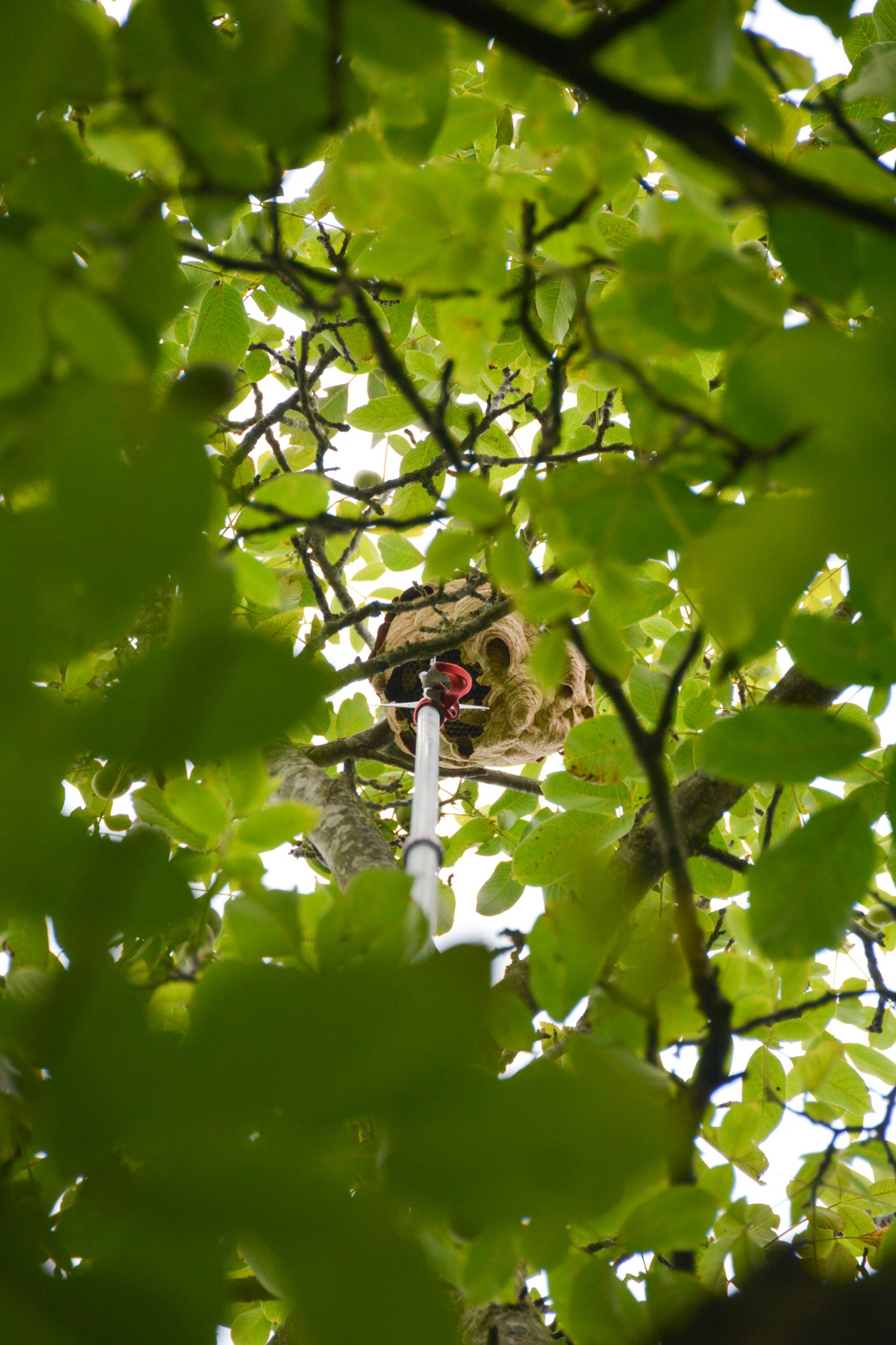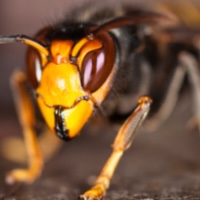Vespa-Watch
Hotline for reporting Asian hornets
Vespa-Watch is the Flemish hotline for reporting nests and individuals of Asian hornets.
Your reports are useful for the monitoring and research of the species in Flanders. Depending on the location, nests are eradicated for free after reporting. Reports of individual hornets are useful to locate nests.
Nests of the Asian hornet become spontaneously inactive during the winter months. An inactive nest is no longer reused. They create a new nest every year, thus eradicating these nests is not needed. Very exceptionally, the nest is still active and some queens from last year are still present. It is not recommended to bring an inactive nest indoors as demonstration material. In very rare cases, a nest may still be active, with a few queens from the previous year remaining in it. [Reporting nests]](/en/report-nest/) is always useful for monitoring the species, even in winter!
What to do if you see a nest?
- Check whether the nest has already been reported via this map.
- If the nest has not yet been reported, take a clear photo and report it via this form. Every report is valuable for research and monitoring!
- Here you can find out whether you are eligible for free eradication.
- An overview of certified exterminators can be found here.
- Contact the fire department in case of emergency (in life-threatening situations).
Where have Azian hornets been seen this year?
- In this database, you can find the distribution of nests since the start of the invasion.
- A detailed map showing the eradication status of each nest in East and West Flanders is also available.
- This link provides results of the spring trapping project in Mijn Tuinlab.
Why are Asian hornets harmful?
The Asian hornet (Vespa velutina) is a wasp species from Southeast China. Since 2016, the species has also been present in Belgium. It is an ‘invasive alien species’:
- The species did not originally occur here, but is now rapidly increasing in number and spreading throughout Flanders.
- It attacks honey bees and other native insects that pollinate our flowers and plants.
Check the What is the issue? page for more info.
What can you see throughout the year?
- In spring, one Asian hornet queen builds a new nest. This is the size of a ping-pong ball and can be found in a sheltered place, such as under a canopy or in a pen.
- From June onwards, the first workers hatch and the nest grows further, to the size of a small football. Now you can start tracking nests using wick bait stations.
- From August onwards, 70% of all nests move to higher places due to lack of space. A second nest is then built high in the top of a tree or on a facade. The entire colony moves to this second nest, and the first nest is abandoned.
- At the end of summer, a nest can reach a diameter up to 1 m.
- In autumn, nest Asian hornet nests become more visible.
- In winter, drones and workers die. Only queens seek a wintering place. Exceptionally, you may encounter an Asian hornet queen inside your house, having awakened early. All nests are inactive, there are no hornets inside. They no longer need to be eradicated.
A detailed overview of the life cycle throughout the year can be found here

How do I recognize an Asian hornet?
Check the identification page to identify individuals, distinguish them from other wasps and identify their nests.
What to do when you got stung?
See this document.
More questions?
Have a look at the video below and/or consult the FAQ page. This is a list of frequently asked questions, where you can find the answers to your questions.
News
News items are only available in Dutch. See all news items.

Heb je een lenteval Aziatische hoornaar in jouw tuin?
December 21, 2025



